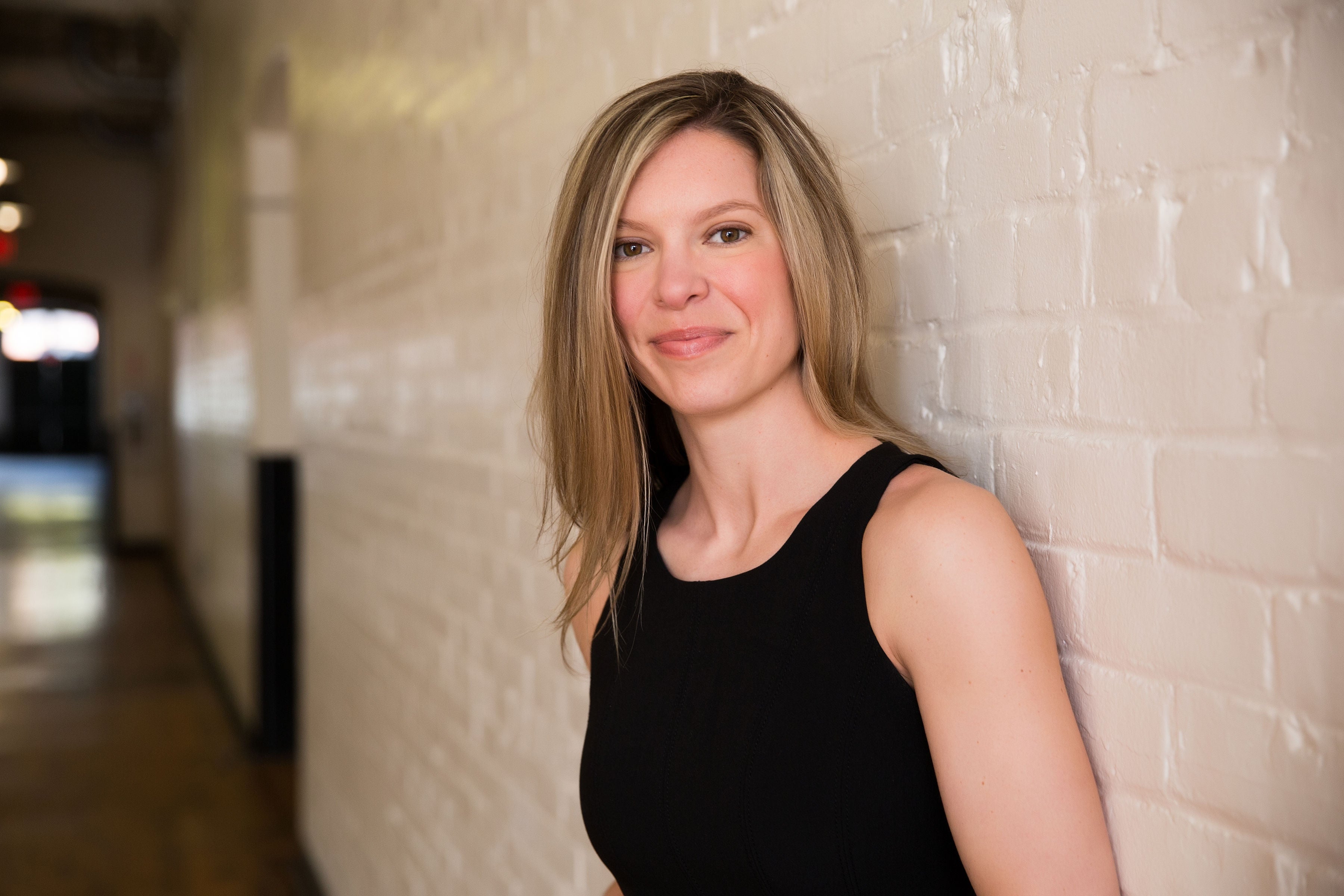The 50 States Project is a series of candid conversations with interior designers across the country about how they’ve built their businesses. This week, Newport, Rhode Island–based designer Ally Maloney tells us tells us how she streamlined her client inquiry process, why her firm offers a project management service and how she’s fighting to expand practice rights in her state.
Did you always know you wanted to be a designer?
Yes. I was always drawn to art and design. When I was elementary-school age, I remember drawing houses and floor plans, clipping images of furniture out of my mom’s catalogs. Fortunately, my parents were always very supportive of my interest in art and design. They allowed me opportunities like private art lessons. When I was in high school, I pitched them the idea of enrolling in a semester of weekend art classes at Parsons in New York, and they said yes. I’d take the train into the city from Connecticut on Saturdays and attend art classes, and that’s how I built my portfolio for college admissions.
The city wasn’t a new concept to me—I was fortunate that growing up as a kid, that’s where I got exposure to New York’s amazing art museums, and I think where my real interest in art and design came from. The experience of taking those classes at Parsons was eye-opening, in that it got me out of my high school art classes. I was in this classroom setting with kids from the city and outside the city, with a college art professor, and we’d take still-life sketching classes with models—that was my first introduction to nude models. We’d also go outside the classroom and sketch high-rises and the cityscapes. It was a really great learning experience and this taste of what was to come in college. I knew I wanted to go to an accredited program—now it’s called CIDA, but back then it was called FIDER—and ultimately I ended up at Wentworth Institute of Technology in Boston.
I feel you’re either a creative, artsy person or you’re not. I think that that’s a component that’s kind of inherent. You have it or you don’t, but I think that’s where college education can really come into play. That kind of formal training really [brings in] the technical components. I didn’t need somebody to teach me how to sketch or draw or match colors together—I needed somebody to teach me the architectural and the engineering aspects behind interior design. That’s what a CIDA-accredited program provides, and that’s what Wentworth’s program provides.
I don’t know that I had that much of an understanding of what I needed from my school for my career when I was looking for college.
I’m definitely Type A.
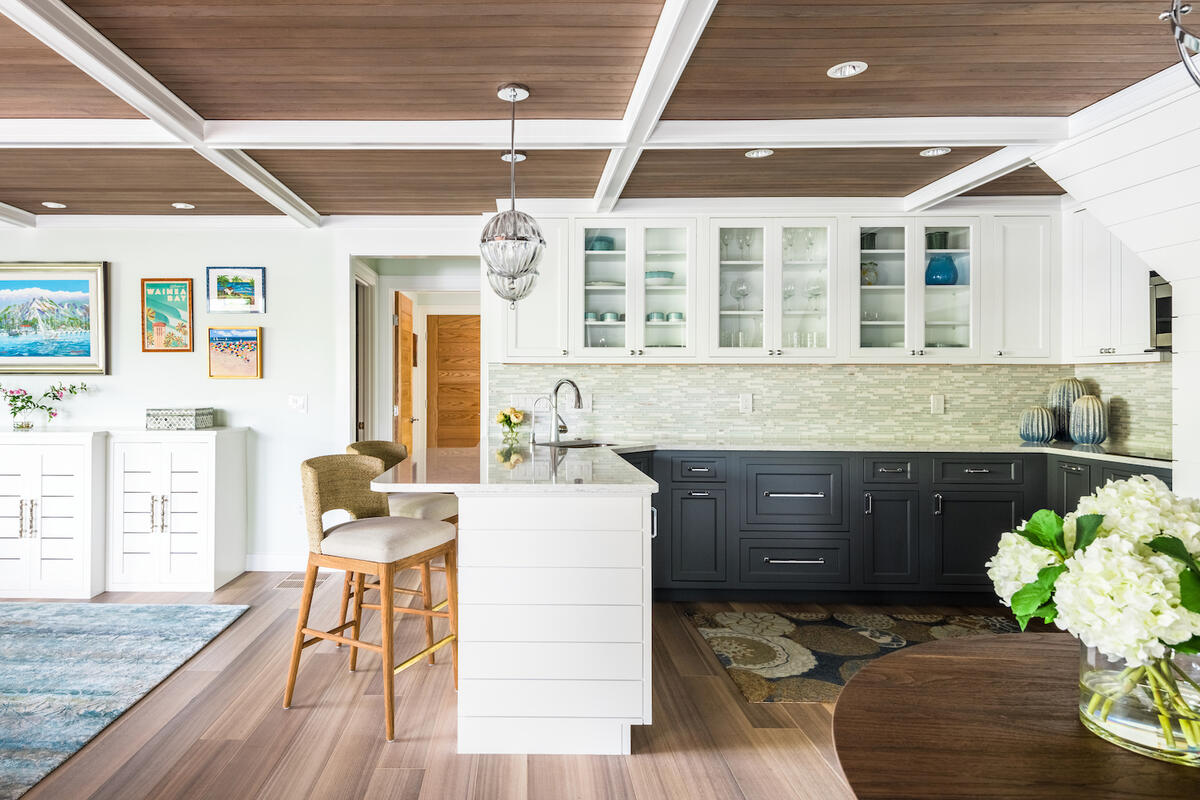
You also had an interest in yacht design from the beginning.
I did. One unique thing about Wentworth is its co-op program. Unlike most colleges, where you get a summer off, at Wentworth you don’t. They break up your year into three four-month semesters, and you’re either on campus in classes, or you’re doing a mandatory co-op, which is an apprenticeship in your field of study. That’s what opened the door for me to explore my interest in yacht design.
When I started researching, I came to realize that the world of yachting is just like designing buildings, where you have this team of professionals—a structural engineer and a naval architect and an interior designer. Through the co-op program, I was able to land a position with a shipyard where I got to understand what yacht design was like from a building perspective. Then I also landed a co-op with a naval architect here in Rhode Island, who offered me a full-time job when I graduated. That’s how I ended up in Rhode Island—I went to work for him, and at the same time, I enrolled at a school called the Westlawn Institute, which is a naval architecture and yacht design school, where I got a certificate in yacht and boat design.
How are you thinking differently when you’re designing for a boat?
I think it depends on your role, because obviously the hull design is the most important thing. You need to know that this vessel is structurally sufficient, that it’s going to float, and there are a lot of weight calculations that go into that. But that’s not what really interested me. I did courses on hull design, but I was passionate about boat interiors. That was always my focus when I worked for the naval architect too.
I mean, what isn’t cool about the sparkliness and glamour of a yacht? Once you get into the yachting industry and get on these boats and see what goes into them, the sky’s the limit. Everything on these boats is custom millwork, which I’ve always loved. There are just exotic wood species and stones and gold-plated plumbing fixtures. It’s just a whole other world, so it was very dazzling.
Is that about the wealth or the resources of the client, or is it about performance?
That’s about wealth and status.
How does that sort of clientele shape the kind of residential work you get? I would imagine that could be a shortcut to clients who are really willing to do something big.
Yeah, definitely. There’s an overlap with clients who started out as boat clients and then, over the course of years, we began working on their homes, and vice versa. They’re clients who appreciate good design, who appreciate quality craftsmanship, quality products, and that’s what I’m about. I don’t want to work on projects with a low budget where we have to shop retail or sacrifice on the quality of furniture to accommodate a smaller budget. I truly believe in well-made, well-crafted furniture and thoughtfully, uniquely designed homes. It does take a larger budget to accomplish those things. I’m working with a clientele who appreciate and expect it, so we’re the right fit for one another.
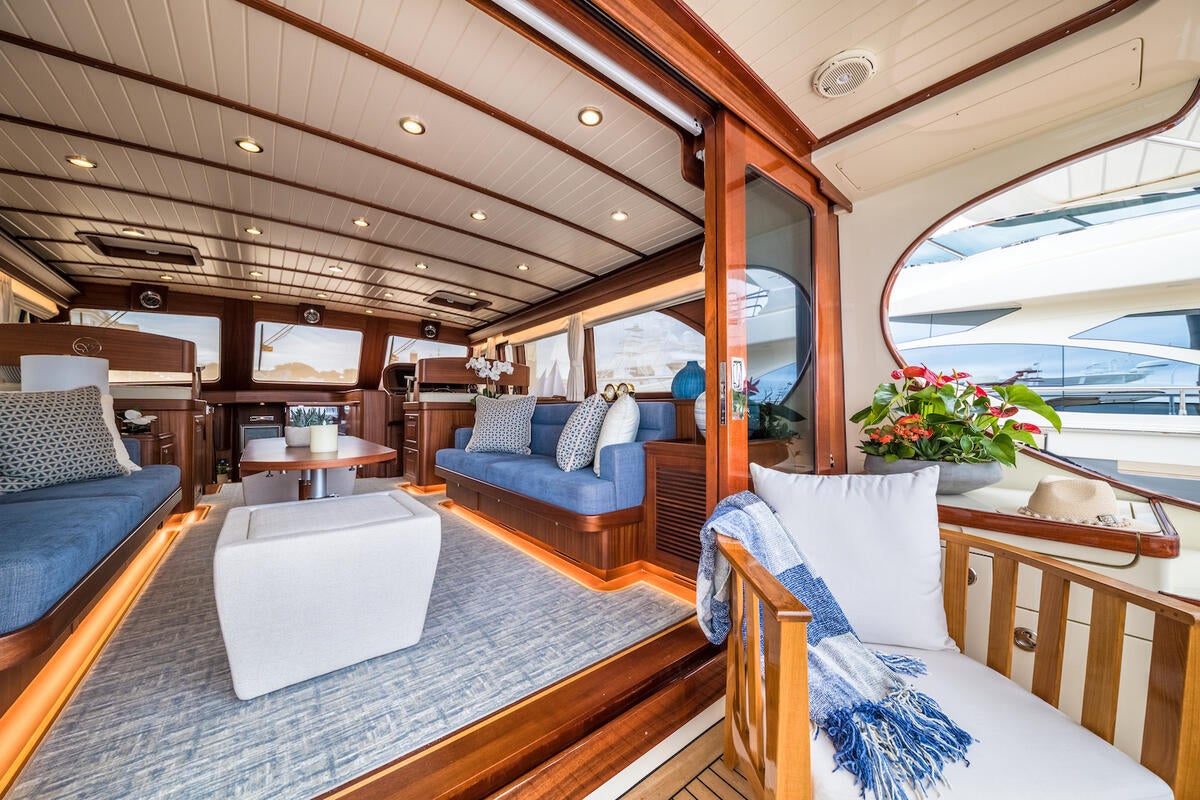
How long did you work for the naval architect, and how did you know it was time to move on?
I was there for a couple years, and the company dissolved. The gentleman who owned the company was much older. At that time, everybody in design and construction was still really feeling the effects of the recession, so no one was hiring. If you had told me when I was in college that I was going to be starting my own design firm in my 20s and I’d be where I am today, I would’ve laughed and said you were crazy. It was never my plan or intention to start my own company as early as I did, but there was no other option for me at the time because so few firms were hiring. I did have an opportunity to go to work for a larger commercial firm in Boston, but I weighed the pros and the cons and I decided that wasn’t really what I wanted—I didn’t want to commute into Boston and work for a large firm where all I would do was sit behind a computer and draft for eight hours a day. I wanted something more creative and more free than that.
Was there any work for you when you first went out on your own?
It was tough. You’re working your butt off, pounding the pavement, trying to gain clientele, get people to trust you with their projects. You’re also trying to pay your bills. That first year, I nannied part-time while I was getting my footing with my business, and it wasn’t until I had enough projects and I saw consistent income that I was able to leave that nannying job and put all my focus on the design business. Back then, I was only doing boat interiors, so I was hustling at shipyards and walking into brokers’ offices, introducing myself. I was getting booths at boat shows to promote my services. I did what I had to do to get enough clients and enough work to keep going.
How did you connect with those early clients?
Those were mostly referrals from yacht brokers whose recently sold boats needed to be decorated, or maybe they needed to undergo a refit to appeal to the taste of the new boat owners. I also got a booth at the Newport [International] Boat Show and found some clientele there. It grew by word of mouth—to this day, the majority of our new business is referral based. At this point, about 25 percent of my business is naval projects and the remainder is residential. So the majority of boat projects that we take today are our repeat clientele who come to us when they’re buying or building a new boat. Occasionally, we still take on referrals from brokers who we’ve been working with and passing business back and forth for years. The same is true for our residential projects. The majority of those projects come from referrals—from realtors, from contractors, from past clients.
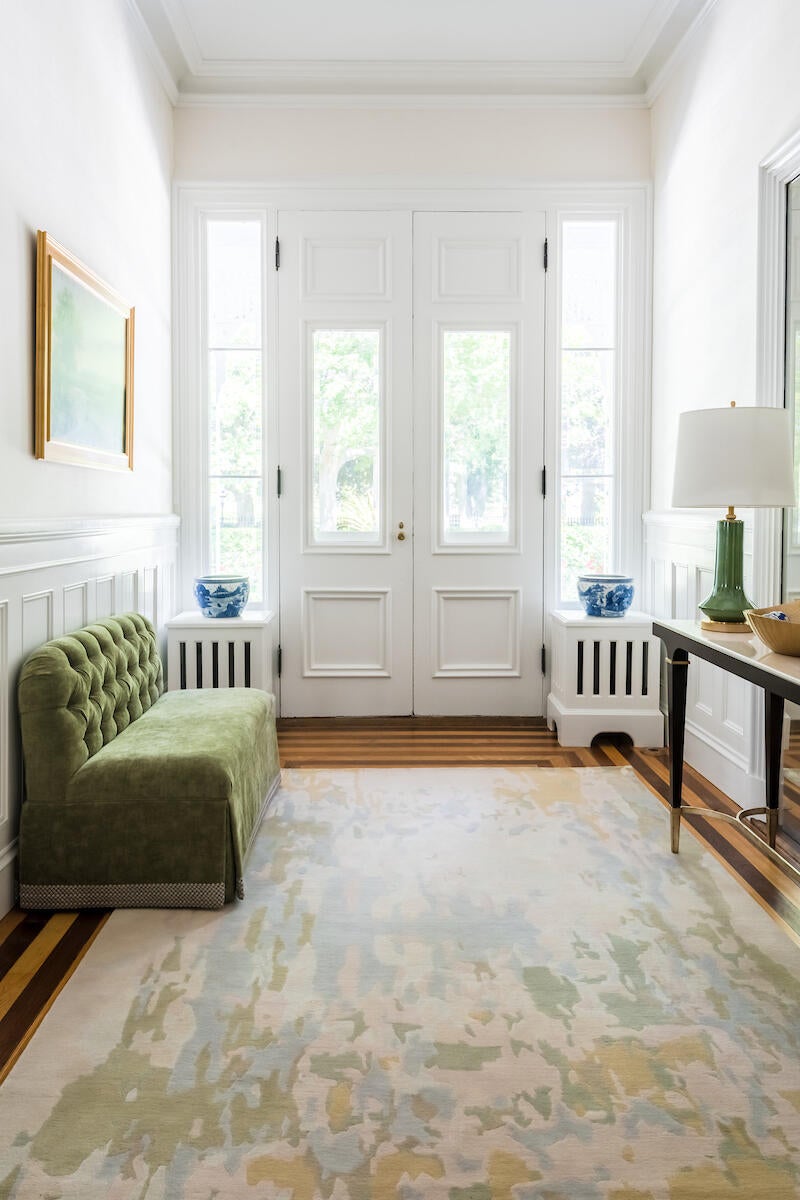
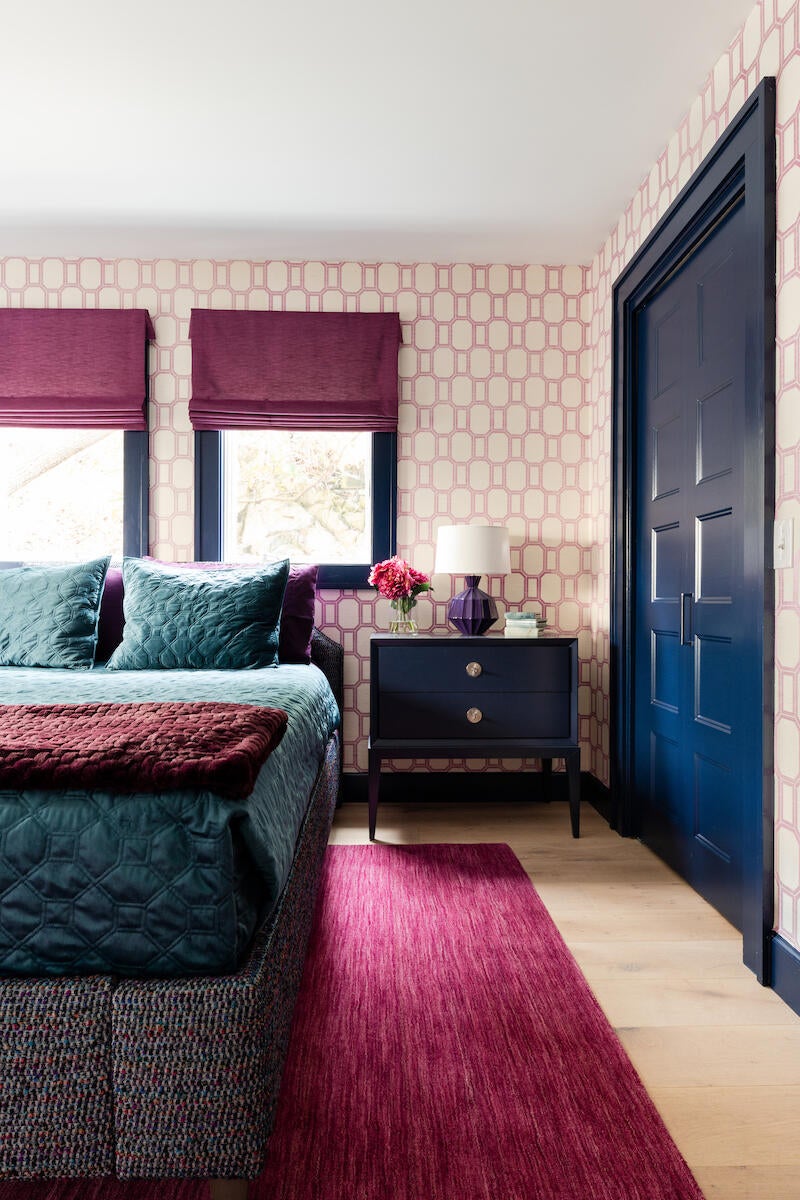
When did you start to shift toward residential?
About four or five years ago. That’s when previous boat or yacht clients started to come to me with projects in their homes. Then, once I had experienced what it was like to gut-renovate a full home and have this project that lasts a significantly longer amount of time than most of my boat projects, I was hooked. I started to focus on shifting gears in terms of marketing and actively seek those residential projects.
How did you build a team along the way?
I was solo until about two years ago. We’re now a team of four. I have a full-time designer. I have a bookkeeper who keeps our studio organized, balances the books and invoices our clients. And we have a part-time marketing coordinator who handles our social media and looks for opportunities in the press. We have others who we work with part-time who help with our project workload: We have a renderer who we work with when it’s time to do renderings for our presentations. We have a draftsman who we work with when our drafting workload is just too heavy for us to maintain it all ourselves.
When did you know you were ready to make that first hire after being solo for so long?
I was at a point where I had an almost overwhelming workload of projects, and I was still getting inquiries for more of these significant projects, full-home gut-renovation jobs. I knew I either had to say no, which I didn’t want to do, or I needed to hire help. That’s when I decided it was time to hire a designer so that I didn’t have to turn down those jobs.
Did it feel like a risk, or did you feel safe making that leap?
It always feels like a risk for me to make moves like that. Sometimes I think I’m my own worst enemy, and I hold myself and my business back because I am so conservative. But also, that mindset has allowed me over the years to substantially build my business’s savings. So I knew that I was going to be able to take on a full-time employee and make it work without any financial qualms.


As you’ve grown and shifted toward residential, has your approach to projects changed?
I have gone through self-reflection and a deeper evaluation of: Who are my ideal clients? What are my ideal projects? What is it I’m really truly going after? I’ve just redone my website. I worked with a branding expert and copywriter, and that was an exploratory process. I worked with a business coach this past year as well. The new website is live, and it’s a true reflection of who we are as a company, in terms of aesthetics, copy and crystal-clear messaging. Next, we’re creating a new onboarding process for clients and project inquiries.
How is that process becoming more streamlined?
It all starts with that inquiry that comes through the website. They receive an information packet from us that goes deeper into detail about the kinds of projects that we take on, where our minimums start, what they can expect a project investment to look like if they work with us, how many design hours it typically takes for different kinds of projects, that kind of thing.
And then we do a discovery call, and then a consultation, if it seems like we’re a good fit. It’s about providing clients with more information so that they’re making a very educated decision if they decide to work with me—and just being very transparent about our process, our approach, our fee structure, that sort of thing.
What made you think that was what your business needed?
When I was working solo, everything was in my head, but I want to continue to grow my team. You need to have systems in place so that the information is available to everyone and not everything has to fall on me to get done. That’s where failure happens in a business—when the owner or the principal isn’t willing to let go of some of that, or they just can’t because they’ve not structured their company in a way where they’re able to. If you’re not giving your employees the right kind of access to be able to do things themselves, then why do you have them? So it’s about this process of getting the entire company to a point where everything is really systematized and organized, and you just have to start at the beginning and then work your way through.
Do you plan to systematize every phase of the process?
At this point, when somebody comes to us to inquire about working with us on a project, I am able to go back and look at the stats from all of our past projects, and everything is scalable. So even if somebody’s coming to me for a 5,000-square-foot project, I can go back and look at a 2,500-square-foot project. If it’s going to be the same caliber of work, I can scale up or down accordingly. In a lot of cases, it’s an educational process because a lot of people don’t have a realistic idea of what it costs to make their home look Instagram-worthy.
Right. They see the pictures in your portfolio—
And they would never think that that was a $75,000 living room. Maybe they’ve worked with a designer before, but they’ve only picked [certain rooms or] pieces with that designer. When you pick away at things, it’s a couple thousand dollars here, a couple thousand dollars there. But when somebody comes to work with me, we’re not picking away at things.
I ideally like full-home projects, but my bare minimum is a single room—but it’s going to be an entire room overhaul. We’re doing everything from paint and wallpaper to rugs and lighting, all your furniture, artwork, decor, everything. It’s a full transformation. When you show somebody what it costs to complete a living room or a dining room that looks like this one or that one in the portfolio, there is that initial sticker shock sometimes, because the entirety is a number they probably haven’t thought of. But then we’re able to show them the breakdown, and once they start to see and understand everything that goes into it, the parts of the puzzle come together and it makes sense. Then it just comes down to what somebody is or isn’t comfortable spending on a project.
Do you feel the difference when you started to systematize in that way?
Yes. Within the last half year, I can go into an initial consultation and sit down and confidently say, “This is how long it’s going to take to complete your project. This is how much it’s going to cost in total. It’s not just what I’m telling you it’s going to cost from my end in terms of my service fees and furniture, but it’s what your entire project is going to cost, including construction.” Because I have enough of those projects under my belt now to know.
Like I said, I’m a Type A, so I have that creative side of my brain, but I also have that other side of my brain that likes to see charts and solid numbers based on evidence. I think that my clients appreciate that too because we’re eliminating the opportunity for surprise—for example, “hidden fees,” things like freight, sales tax, receiving house storage fees and delivery fees—those kinds of things can really add up.
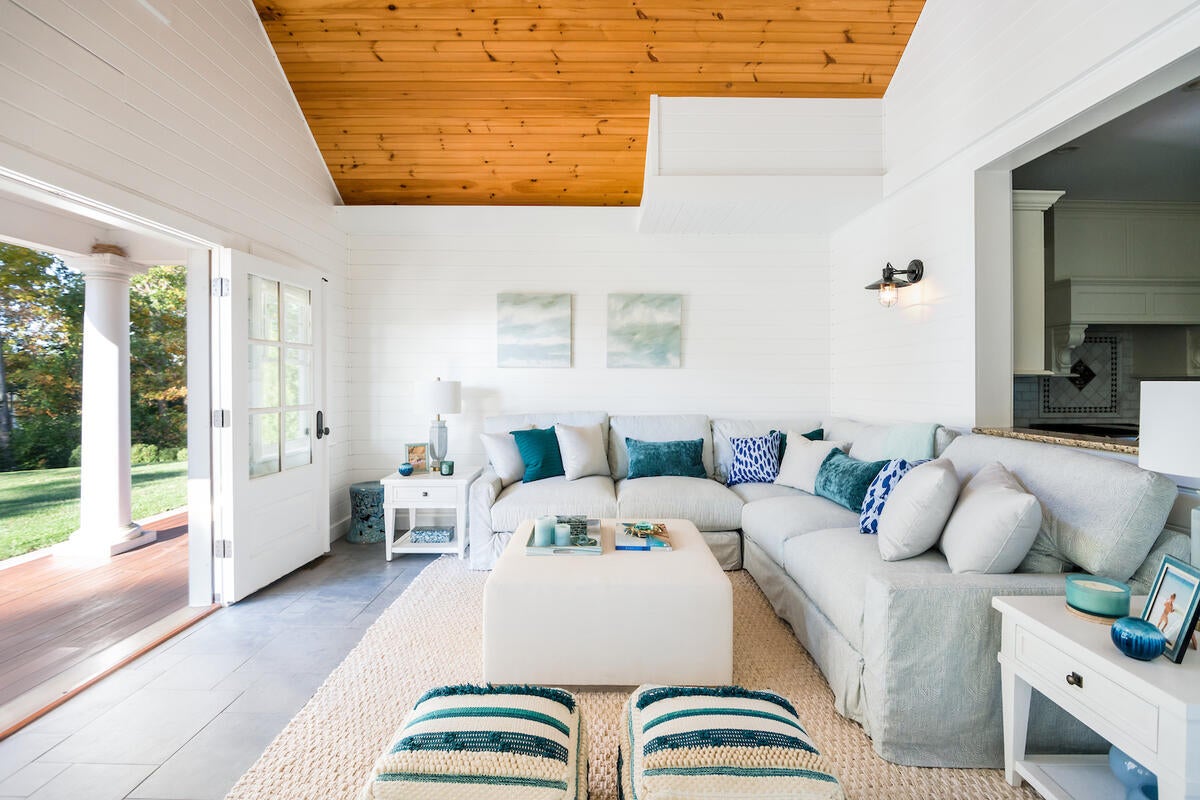
How have you approached charging for your work, and has it changed over time?
Not really. We charge $225 an hour. That fee has changed, of course—over time, it increases.
Is that for everybody on your team? Or do rates fluctuate depending on who’s doing the work?
That’s the rate for everybody on our team. We’re a small firm, and we wear many different hats. We contribute equally to a project’s success. I don’t see the need to do a tiered pricing structure for my company when we’re as small [and fluid] as we are. That said, if we have a client meeting and [my designer] and I are both present, I don’t double-charge the client.
Why did hourly feel like the right fit for your business?
I think it was comfortable because, especially in the beginning, how would you ever go about determining a flat fee for a project? At this point, I could do a flat fee, but I still choose to do hourly. I’m not totally comfortable or confident to go into a project at a flat fee and feel like it’s going to be fair for me. I’m happy with [hourly charging], my clients are happy, I’ve never gotten pushback. And again, because we’ve kept solid records of what we spent, I can pretty accurately ballpark a figure for my clients and say, “I think this project is going to take us 250 hours, start to finish,” or whatever. I think that’s really just what most people are looking for.
When I hear designers talking about the way they charge, often it’s reactionary to client pushback. I love that yours are comfortable and happy with the way you work.
Yeah, I think it’s because it’s fact-driven information. I tell people, “I’m not pulling these numbers out of my sleeve. These are based on past work.” I began a new project last month, and I was able to do an exercise for the clients. I looked back at a project that we had completed last year—I didn’t want to go too far back because we’ve been paying more for everything since the pandemic—where the price point was going to be as comparable as possible.
I said, “OK, let’s open up my website, let’s pull up the portfolio. This is how much this kitchen cost. This is how much this bedroom cost,” and so on. They were able to look at the photos of the completed project, and look at the breakdown on my spreadsheet, and see that was a $6,000 sofa, those were $5,000 window treatments, that was a $3,000 chandelier. And then they understand how we got to that $60,000 tally at the bottom. They understand that if they want a fully furnished and completed home just like that one, the reality is that’s how much it’s going to cost. And then our clients buy everything for their projects from us, and we sell to them at MSRP.
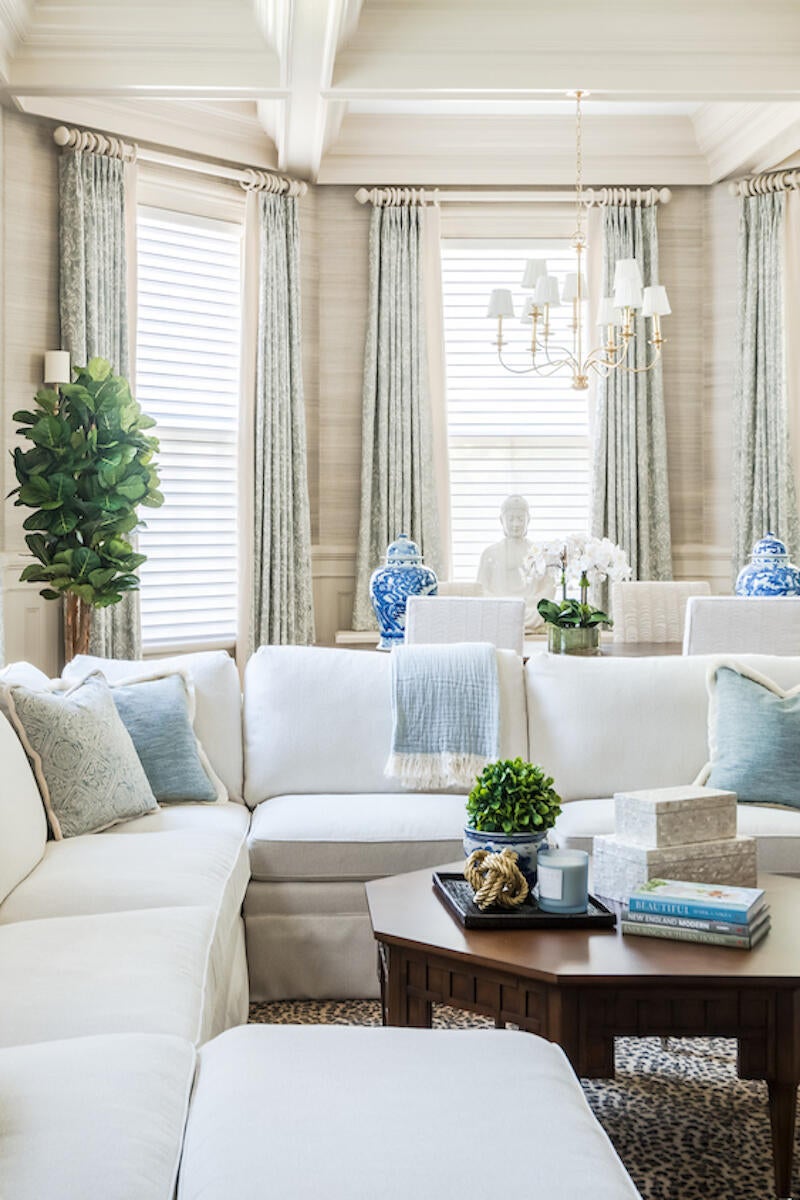
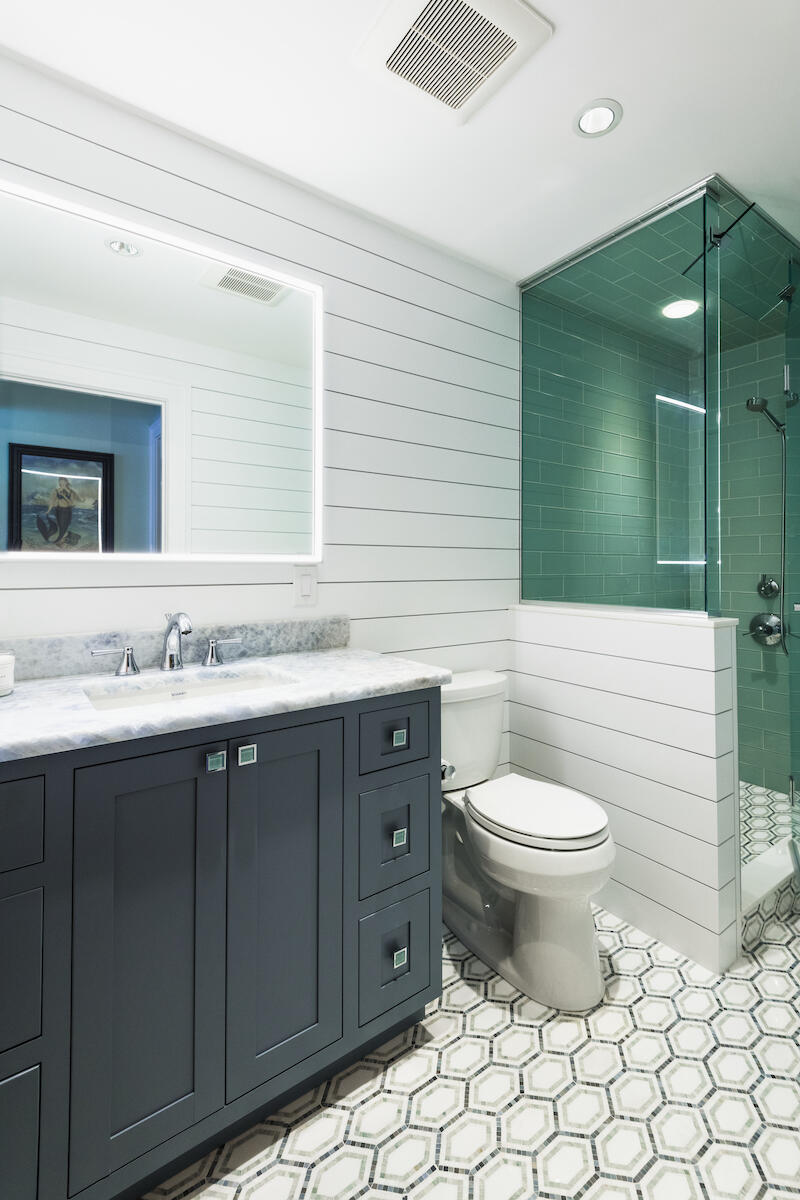
How many projects are you typically working on at one time?
At the moment, we have eight full-sized projects. Two of those are new yachts that are being built, and the other 75 percent are residential; plus we have a few smaller projects for our repeat clients when they call us back up to tackle a little something extra at their house or whatever.
Can you tell me about the Rhode Island housing and design market?
The majority of our projects are here in Newport, but we do serve pretty much all of Rhode Island and the South Coast of Massachusetts. It’s rare that we work on someone’s full-time or primary residence. The majority of our projects are either second or third homes, and mostly all seasonal, so homes that they’re occupying for maybe three months out of the year. And we have a wide range of clientele. We’ve had the thirtysomething power couple from Boston with their summer home in Newport, all the way up to our retired clients in their 70s who have downsized from that large Rhode Island home to the smaller, more manageable summer home. A lot of our clients are full-time Florida residents who come up here in the summer, some retired. We also have a lot of working clients—most are business owners, or they’re running very large companies. And through our yachting clients, we’ve had Fortune 500 leaders, Forbes 100 families.
Does the focus on secondary homes change the style and sensibility of your work, or your design process?
So, I don’t think it changes the processes, because when you’re designing a home for someone, you always want it to be beautiful but also functional. And that’s regardless of whether it’s their primary or secondary residence. You want it to be fitting for the way that they intend on using it. For the most part, our clients take a bit more of a transitional, casual approach to their homes. In terms of our design style, we don’t do nautical, but coastal in speaking to the region. We do have a couple of clients with historic homes on Bellevue Ave in Newport that have very formal architecture, so the interiors tend to follow suit.
Because most of the homes are secondary homes, our clients are living elsewhere while their homes are being worked on. We do interior design and project management, so we are with the project through the entire design phase. And then once construction starts, we’re on the job site every week, overseeing the contractors’ work. We’re making sure that their project is on track. We’re photographing, doing progress photos, sending our clients weekly updates so that, even though they might be in Boston or in Florida, they feel like they’re still a part of the project and things are running on schedule. And when the contractor runs into questions, they’re contacting us, not bothering the client. A lot of our clients, even the ones who are retired, don’t necessarily want to be bombarded with questions that arise on-site. I think that service has been really valuable to our clients.
Is that just part of the way you work, or is that a separate service offering?
They do have the option to just hire us for design, in which case we wouldn’t be at the job site weekly or biweekly throughout the construction process, but nine times out of 10, they hire us for project management as well.
Are you connected with the local design community?
I have served on the Board of Directors for the ASID New England chapter. This is my seventh year, and I just started my term as president of the chapter on October 1. So outside of my workload here in my office for my clients and my projects, I also have this volunteer job with ASID where I’m investing my time and my efforts into advocating for interior designers and just trying to make the interior design industry in New England better.
Why is cultivating that community important to you?
I think that interior design is one of those industries where a lot of practicing designers are solopreneurs. I think it can become a little lonely, a little isolated, when you work by yourself. It’s a great thing to have a relationship with other designers who you can speak openly and honestly with about your business. And when you’re facing a challenge, have someone to talk to about it.
It can sometimes be difficult or intimidating to approach other designers to talk about those things openly and honestly. ASID, for me, has been a place where I’ve been able to forge some great relationships with other designers and never with that feeling of competition or anything like that. In fact, just kind of the opposite of that—more community feeling. For me, having been a solopreneur for so long, I think that that was really valuable, and I think other ASID members have found the same. ASID, as an organization, provides a lot of resources to members in terms of access to affordable business insurance and access to resources like contracts and trade discounts and benefits and continuing education—whether it’s product-related education or even business-related education.
There’s a huge social component, too, where you have an opportunity to meet other like-minded designers and forge relationships. And advocacy is also a big part of what ASID does—advocating for practice rights of interior designers. So that’s an exciting thing that we have coming to Rhode Island in the coming year. Two weeks ago, ASID and IIDA held an event in Providence where we announced our plans to begin the process of advocating for practice rights for interior designers of Rhode Island.
That would change a lot for you, right?
Ultimately, what I would be able to best gain from that [is the ability] to stamp my own drawings [with NCIDQ Certification]. The only reason I haven’t sat for the NCIDQ Exam is probably the same reason that a lot of Rhode Island designers haven’t—because the state doesn’t offer that opportunity. I could sit for the exam and I could pass it, but then I’d have this exam under my belt and I’d have nothing to do with [that certification]. But knowing that that is something that we’re going to be working on, [bringing NCIDQ to Rhode Island] this year, I have to sharpen my studying skills.
That’s a big deal.
Yeah. Stamping drawings would be really exciting for me. And then for designers who practice commercial design, they’d have opportunities to bid for projects that they currently don’t have access to. So there’s great opportunity for designers who want to take advantage of it when the time comes.
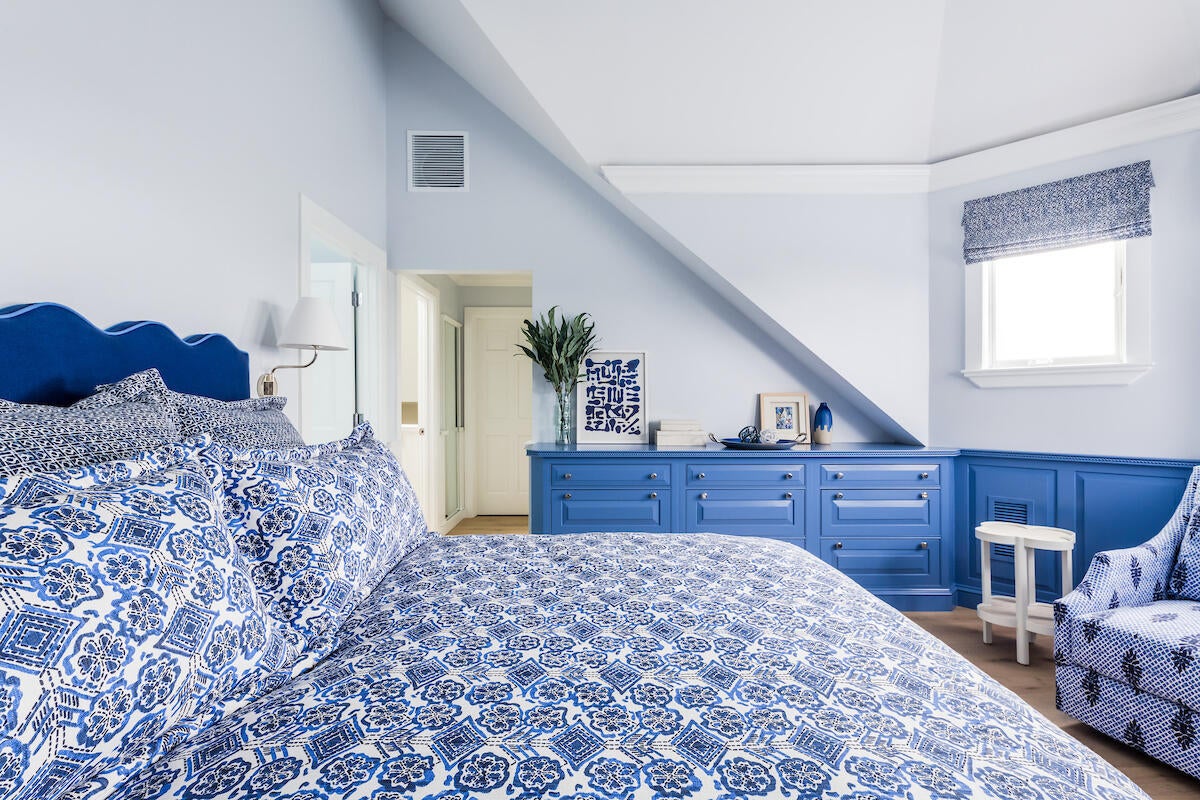
What is the biggest thing you wish you had known when you started your firm?
I think—and I’m still guilty of it—worrying, worrying, when’s the next project going to come? Or where is it going to come from? Is it going to be big enough to carry us through the next year? I think a lot of angst and anxiety has gone into building the business, and that’s a lot of stress to put on yourself. I think just having faith in who you are and that you’re not going to let yourself fail, you’re not going to fail. And maybe having a little bit more confidence to spread your wings and take that leap of faith to, I don’t know, invest a chunk of money back into the business in terms of marketing or, if you’re feeling stretched thin, just put the ad out and hire that extra person to help you.
Are you feeling more confident doing those things now?
I do. Everything’s worked out. But like I said, I am a conservative person, so I sometimes hold myself back from doing those things. To this day, I’ve not allowed myself to dive too deep.
What does success look like for you?
I would not say it’s something that comes with a dollar sign or a certain number attached to it. I get fulfillment from knowing that I am creating an opportunity for my team to be able to practice what they love to do. And I get sincere fulfillment when I see that my clients are living happy lives in their new home, and that they find joy in what we’ve created for them.
To learn more about Ally Maloney, visit her website or find her on Instagram.















